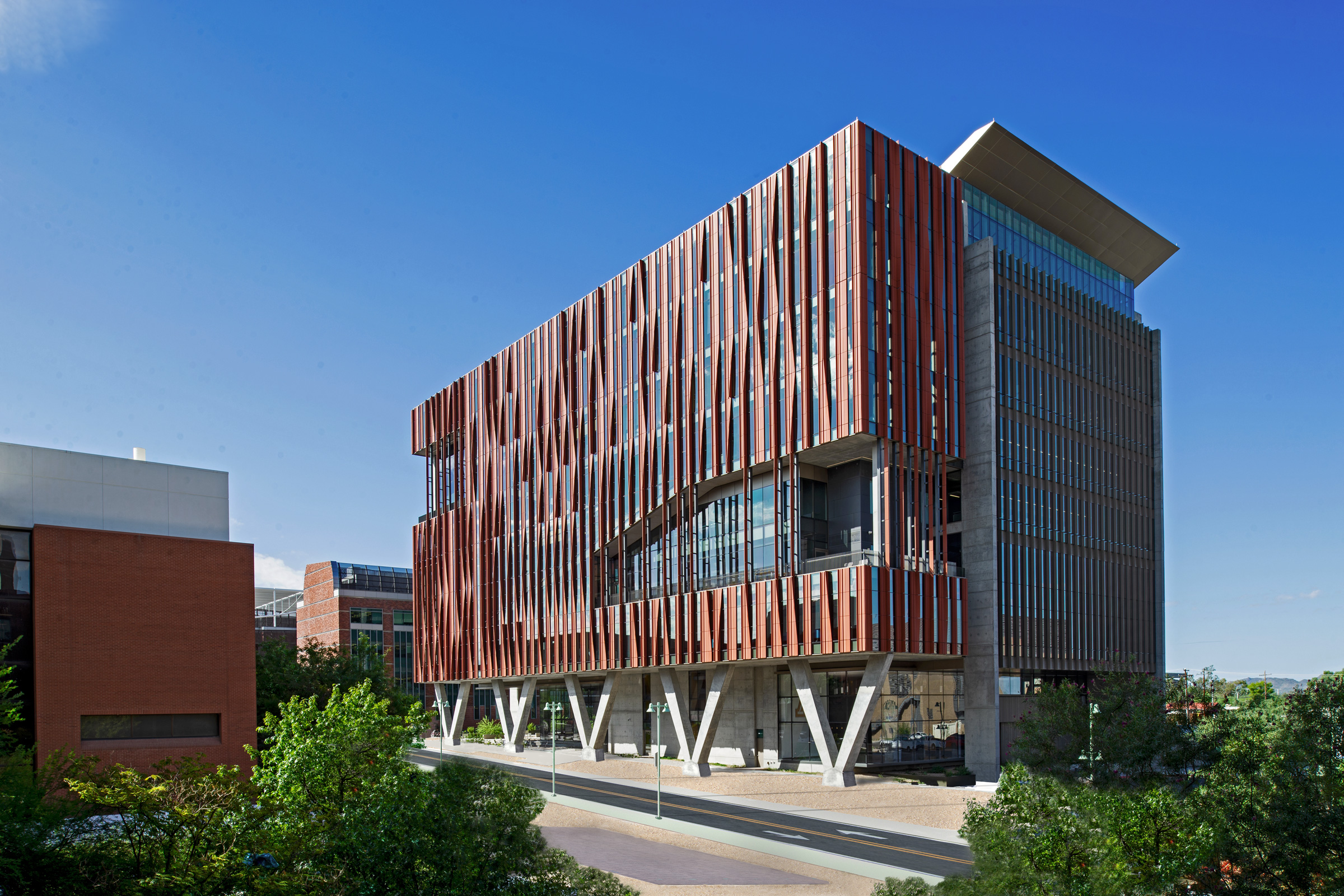Story at a glance:
- The Architectural Ceramic Assemblies Workshop (ACAW) is a cross-discipline group exploring the possibilities of architectural terra-cotta.
- Architectural terra-cotta is a lighter weight and lower-carbon replacement of aluminum, steel, and concrete in many parts of a building.
- Terra-cotta can also be used as roofing, floor tiles, and for any number of interior surfaces.
Glass, steel, aluminum, and concrete make up the vast expanse of cityscapes around the globe. But there’s a new (sort of) material on the scene—architectural terra-cotta—that is changing the game.
Architectural terra-cotta (ATC) is an old material that’s finding new applications in very important places, building facades, for very important reasons. It’s resilient and lightweight, it carries relatively low embodied energy, it offers design versatility, and it is made from a very sustainable source: clay.
A leading proponent of ATC is John Krouse, chief executive officer at Boston Valley Terra Cotta, based in Orchard Park, New York. It’s only one-quarter the weight of natural stone, the through-color does not fade from sunshine, and it even may play a role in future building as a conduit for evaporative cooling and thermal heating.
Today ATC can be used for more than ornamentation or a rain screen. It’s strong enough to serve as part of the structure. That’s exactly why architects, facade builders, academics, and related construction interests are participating in a collaborative convening of the minds—the Architectural Ceramic Assemblies Workshop (ACAW)—to explore the possibilities of architectural terra-cotta.
Architectural Terra-Cotta Enters a New Age
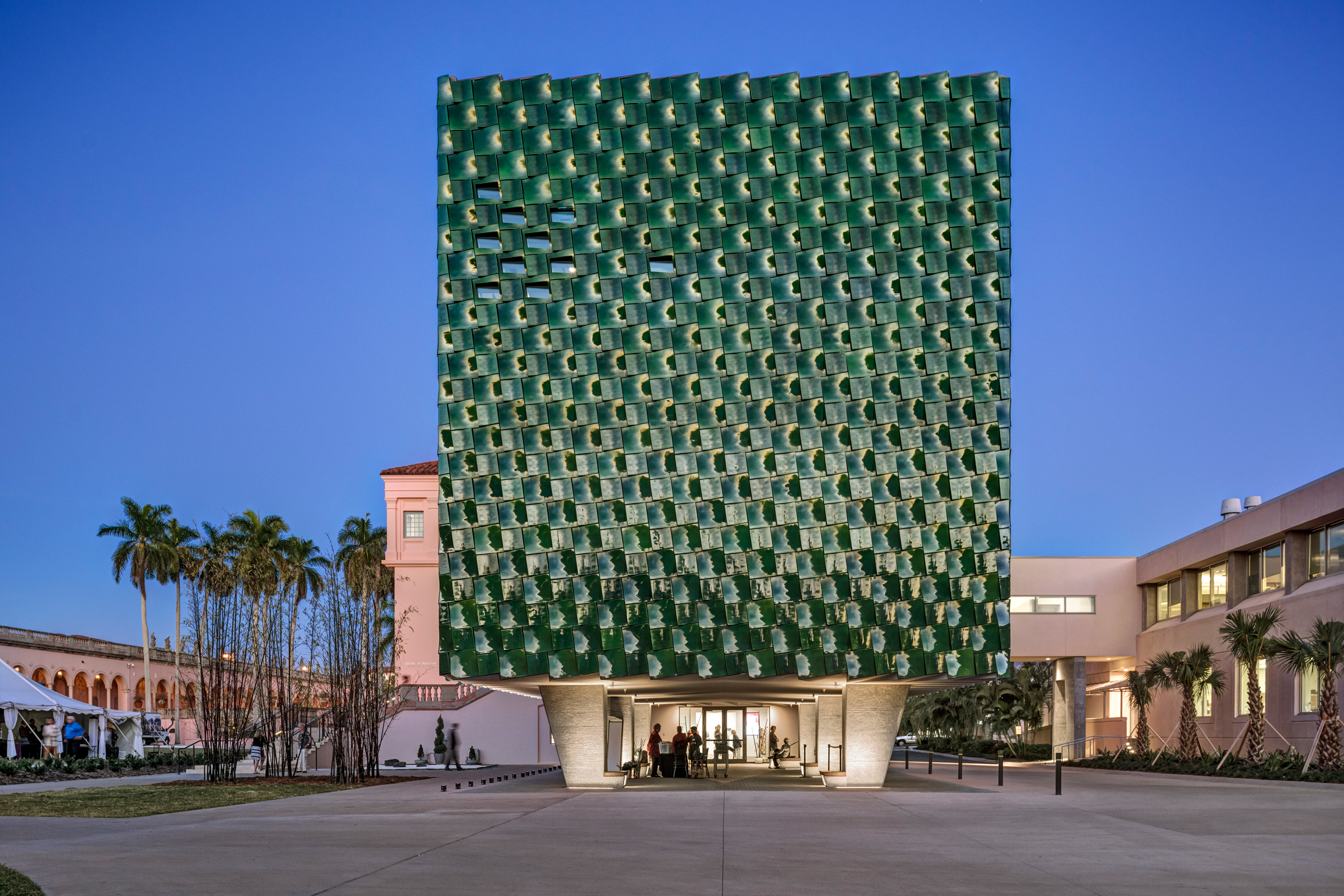
The John and Mable Ringling Museum of Art in Sarasota. Photo by Anton Grassl
Terra-cotta, or “baked earth” in Italian, has been around for millennia. It’s made of an abundant material, clay, and when fired in kilns it hardens into whatever forms a sculptor or building material designer chooses.
Most popular as architectural ornamentation in the late 19th and early 20th century, terra-cotta served a second purpose as a fire-resistant rain screen on the new skyscrapers and other structures of that time, as well as a roofing tile. But it fell out of favor when the glass, steel, aluminum, and concrete towers of the International Style became dominant after World War II. Most terra-cotta manufacturers since that time primarily provided replacement pieces, as few new structures were being built with the material.
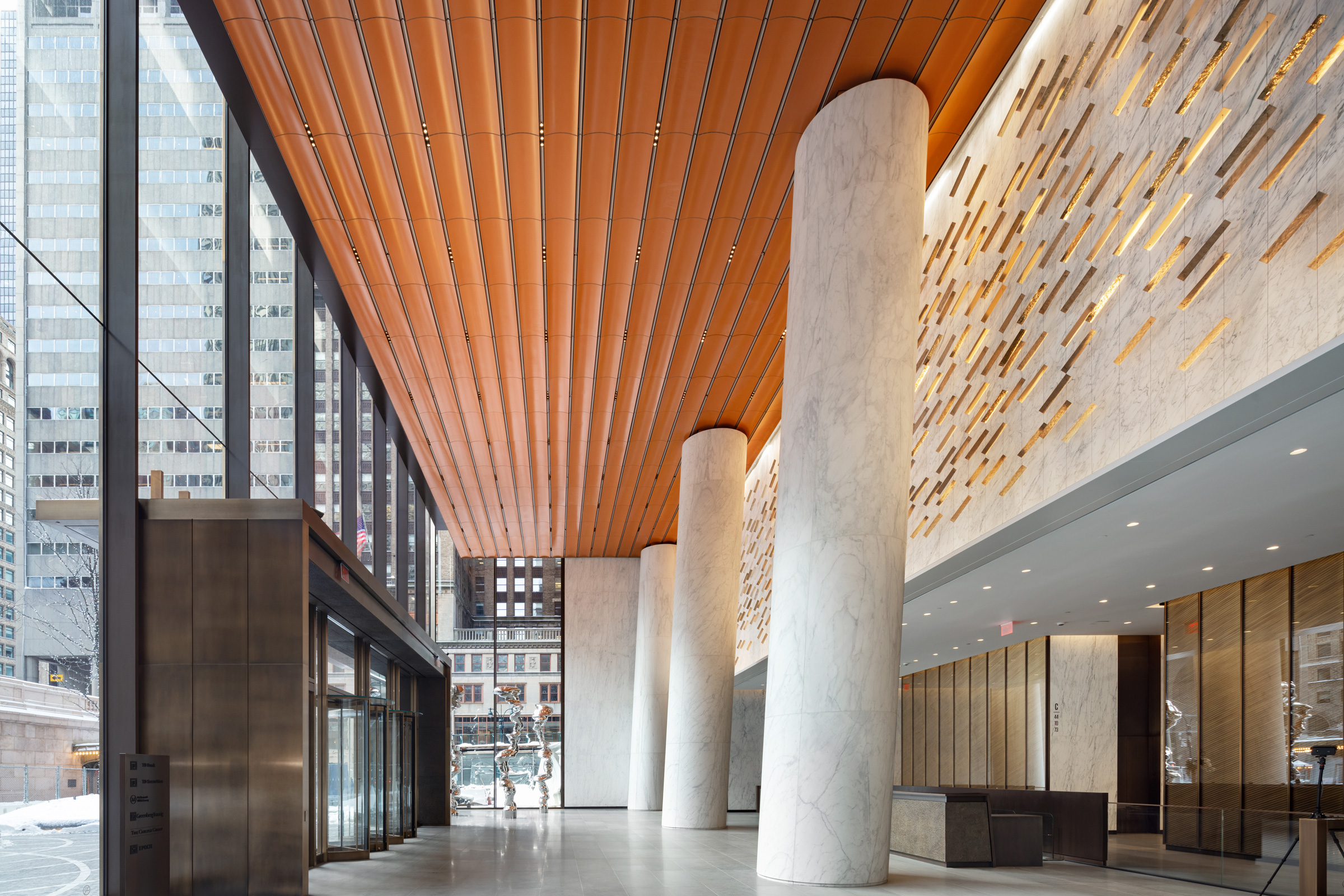
Inside One Vanderbuilt. Photo by Raimund Koch
But architectural terra-cotta is the surprisingly sustainable material of the 21st century. It has a much lower embodied energy (as measured in CO2 emissions per ton of material) relative to aluminum, steel, glass, and concrete. With proper design, installation, and care—maintenance requirements are minimal—ATC can last hundreds of years.
Already the material has been employed by leading architectural firms in some strikingly handsome applications. Boston Valley Terra Cotta has produced ATC that is seen in the facades of One Vanderbilt, The John and Mable Ringling Museum of Art, The Fitzroy, 512 West 22nd Street, the University of Arizona Health and Sciences Innovation Building, the Newman Passages, and many more all over the globe.
Architectural Ceramic Assemblies Workshop
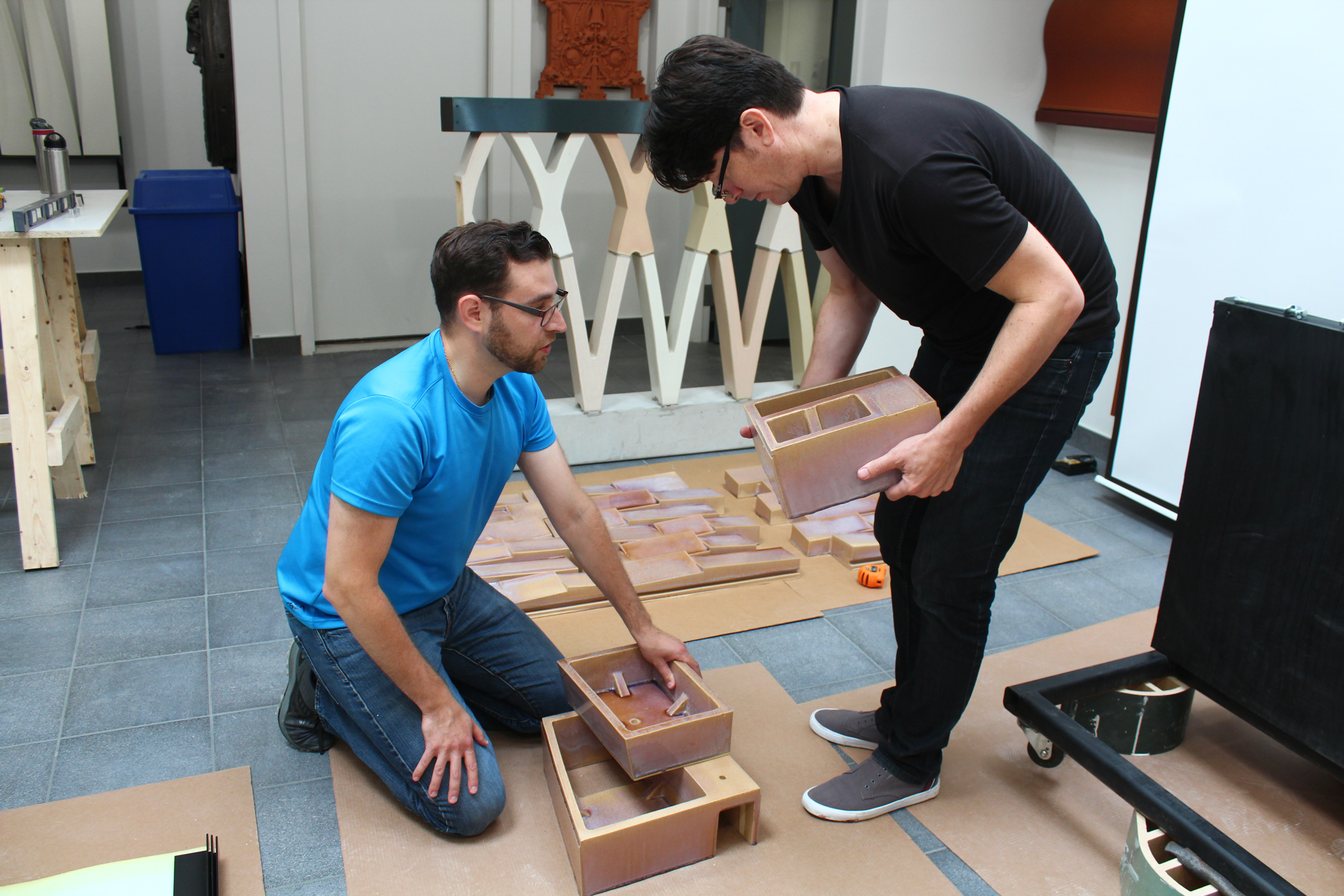
The Goody Clancy Architects team at ACAW 2021. Photo courtesy of Boston Valley Terra Cotta
Change—exploring the possibilities, limitations, and additional research required of architectural terra-cotta—requires creativity and experimentation. This is why the ACAW was born in 2016.
Based out of Boston Valley Terra Cotta and two nearby institutions of higher learning—Alfred University and the State University of New York at Buffalo—the workshop brings together architects, engineers, builders, ceramics artists, and ATC manufacturing experts to explore new ways in which the material can be used as a building material.
The workshop takes place over eight months, January through August, culminating in a three-day event with guest speakers like James von Klemperer (president and design principal at Kohn Pedersen Fox Associates), Sara Lopergolo (partner at Selldorf Architects), Christopher Sharples (principal of SHoP), and more.
In the months preceding the live event in late summer, teams are assembled to address a hypothetical project involving ATC. “It’s like an open charette,” Krouse says. “The teams spend several months learning how the material can be used. It’s fun and competitive, and what comes out of each team is amazing.”
The Changing Needs of Buildings
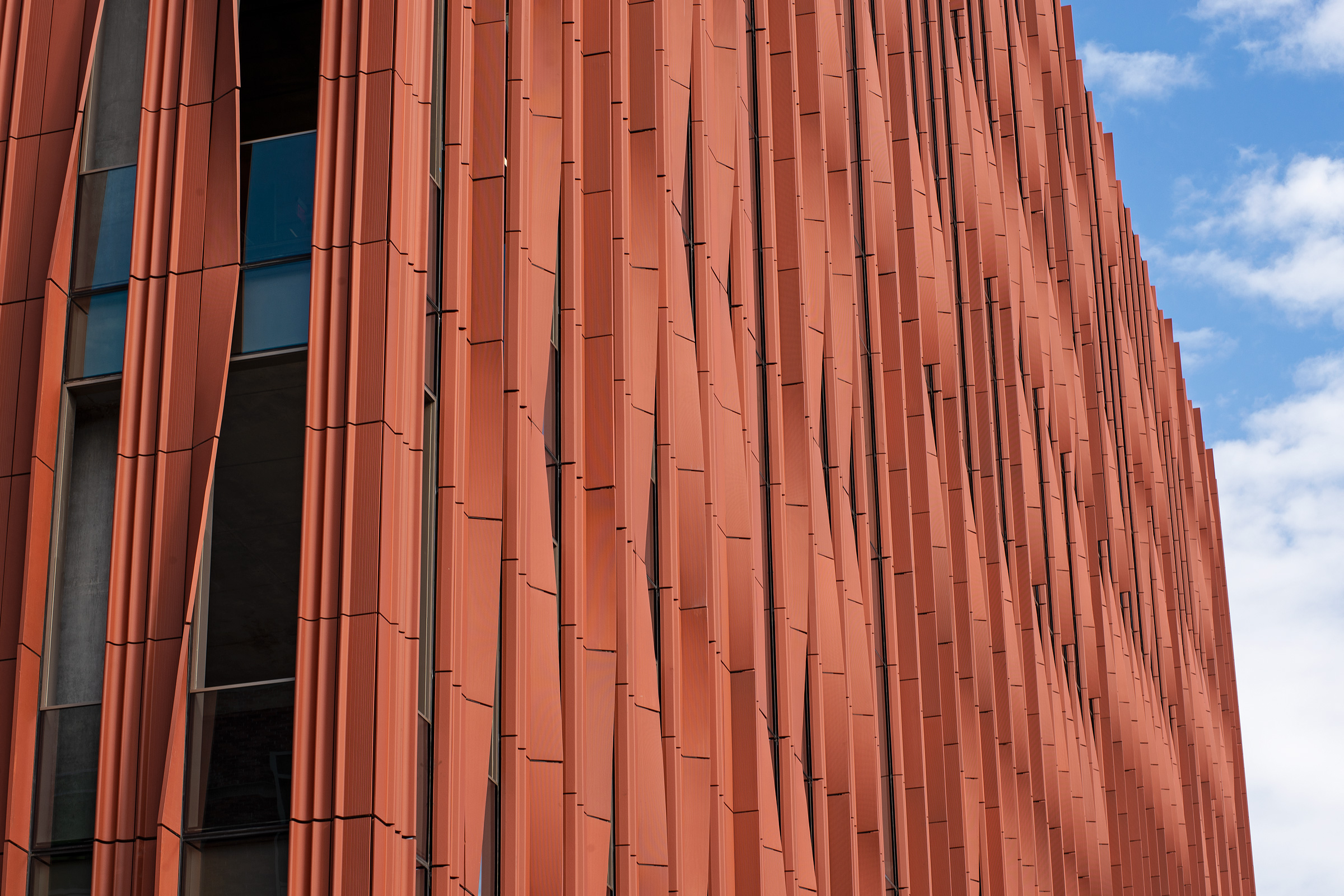
The University of Arizona. Photo by Larry Kantor
The rediscovery of architectural terra-cotta coincides with the exuberant period of building design in the new millennium. A decided break from rectangular boxes of 20th century modernism, the cityscapes are now populated with large-scale sculpture of often-undulating, asymmetrical forms, cantilevered rooflines, and just about anything that departs from right angles.
The designer strongly associated with this movement, if it can be called that, is star architect Frank Gehry. Roberto Bicchiarelli, business development manager and lead concept designer at Josef Gartner USA (a division of Permasteelisa North America), says they’ve worked on several Gehry projects, including the Guggenheim Museum in Bilbao, Walt Disney Concert Hall in LA, and the Novartis Campus in Basel. “We had to invest in the software and training to keep up with this,” says Bicchiarelli, whose firm is a global leader in architectural envelopes. “So of course we want to know if our vendors can create the complex shapes required of these designs.”
Bicchiarelli adds that, at the same time, the carbon footprints of building construction and those buildings’ subsequent ability to operate with energy efficiency have risen to importance. This places a great deal of responsibility on designers, manufacturers, and builders to devise more complex solutions.
The role that ATC can play in this is considerable and is a driver in much if not all of the projects developed at ACAW. Importantly, ATC is also now more than ornament and rain screen: It can be a part of the structure, a lighter weight and lower-carbon replacement of aluminum, steel, and concrete in many parts of a facade. And just as important in this era of buildings-as-sculpture, it brings color and glaze to the infinite variety of forms, which Bicchiarelli values.
Additionally, because terra-cotta can also be used as roofing, floor tiles, and any number of interior surfaces, an aesthetic unity between walls and roofs, and outdoors and indoors, can be achieved.
In a presentation at ACAW 2020 William M. Carty, a former ceramics engineering professor at Alfred University, laid out the energy requirements of other building materials relative to that of clay-based architectural terra-cotta. Cement requires twice as much energy to produce and transport, plasterboard needs three times as much energy, glass is six times greater, and it increases from there: steel (10 to 15 times), plastics (15 times), stainless steel (20 times), copper (20 times), and aluminum (100 times and greater) are progressively worse.
“With terra-cotta, everything is made in one place,” says Carty, adding that the firing process with ATC is misleading in the comparisons. “It’s the least energy intensive compared to metals and plastics … They all start with mining, with huge environmental costs … beneficiation and refinement processing of those materials are immense and incredibly costly [to the environment].”
ATC as a Structural Component

The Fitzroy. Photo by Jimmi Billingsley
ACAW 2021 is yielding something that is critically important: It has the compressive strength to serve as an intrinsic part of the structure itself.
One of eight project teams in this year’s workshop is looking at window mullions comprised of terra-cotta segments that are post-tensioned with internal stainless steel tendons (ATC has compressive strength characteristics; the tendons provide the tensile strength). They also considered variations that could include external tension elements. An additional possibility is a unitized curtain wall of pre-stressed terra-cotta frames.
That team includes HOK (engineers and architects), TriPyramid Structures (hardware systems design and manufacturing), and the Gartner division of Permasteelisa North America (design, engineering, fabrication, and installation of curtain wall and advanced facade systems).
According to Michael Mulhern, president of TriPyramid, aluminum mullion curtain wall systems fare poorly against tighter energy codes being placed on new construction. Another facade technique, panelization of the curtain wall, “creates a network of joints, which typically interrupt any insulation included in the opaque portion of the facade.” This effectively drives up U-values, a measurement of how well insulated glass holds in heated or cooled air (lower U-values are more efficient)—which ATC can improve upon.
Replacing aluminum with architectural terra-cotta can address the metal’s problematic features. And it also provides designers freedom to create entirely new and surprising facade features.
Why ACAW?
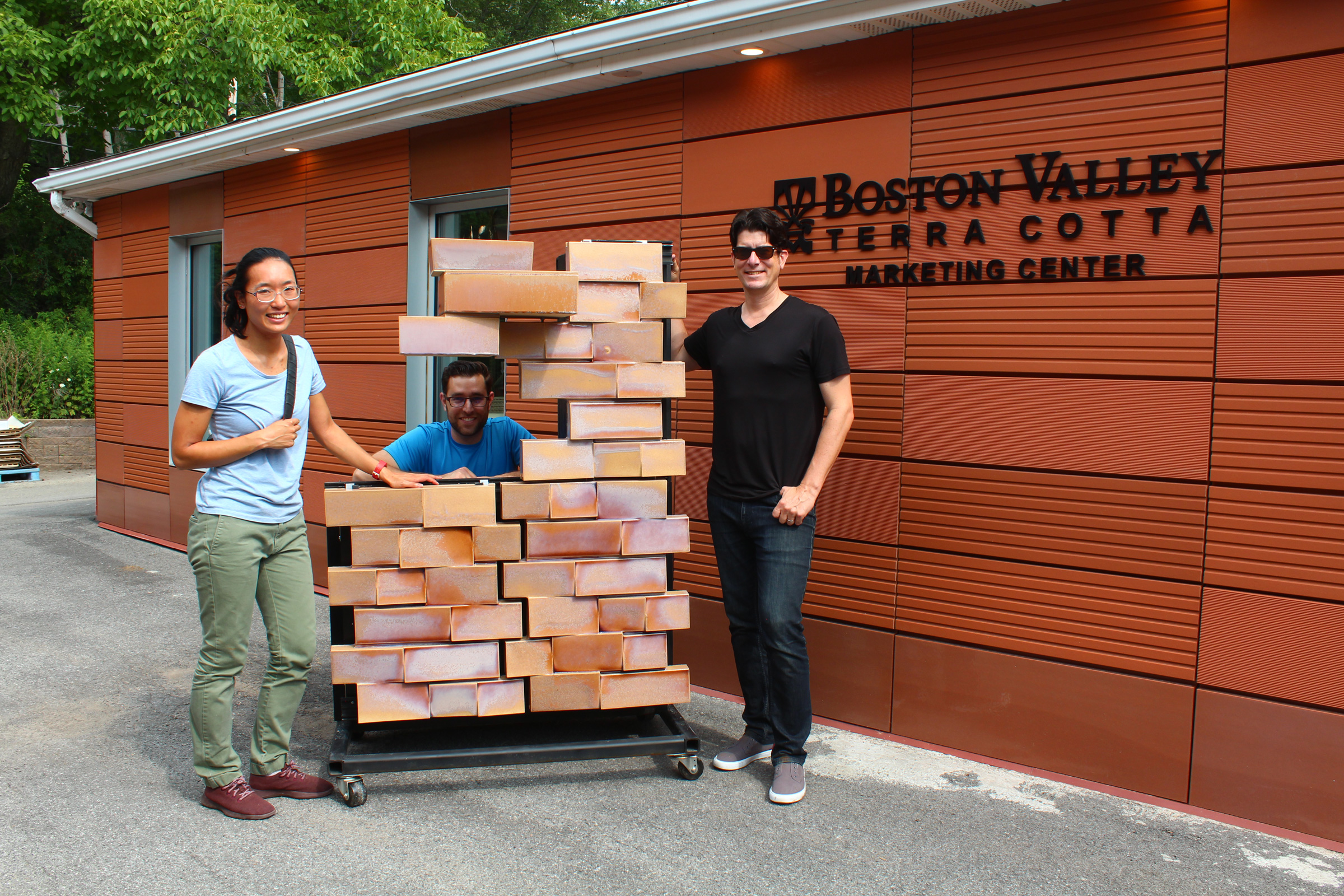
The Goody Clancy Architects team at ACAW 2021. Photo courtesy of Boston Valley Terra Cotta
Why do so many companies of size and prominence take part in ACAW? Perhaps the question should be: “Why wouldn’t they?”
“My interest in ACAW is it’s an opportunity to engage with the other people in a theoretical exercise,” says John Neary, a senior facade specialist at HOK. “Real innovation only takes place with this extensive degree of collaboration between multiple players.”
Indeed, the fact that a project deadline and budget do not hang in the balance is part of what makes this exercise attractive. The workshop is quite similar to academic research in that the spirit is focused on discovery, not delivery. If they find things that don’t work, the finding itself has value. “ACAW is truly research,” says Boston Valley’s Krouse. “It allows for failure without clients screaming at you.” Instead, Krouse describes the exercise as “very positive, very collaborative, very good energy, and it breaks down barriers and myths around ideas, enabling us to explore new concepts.”
At the same time, each team member has reason to ultimately find workable solutions, which they might begin to employ sooner rather than later.
ATC in the Future
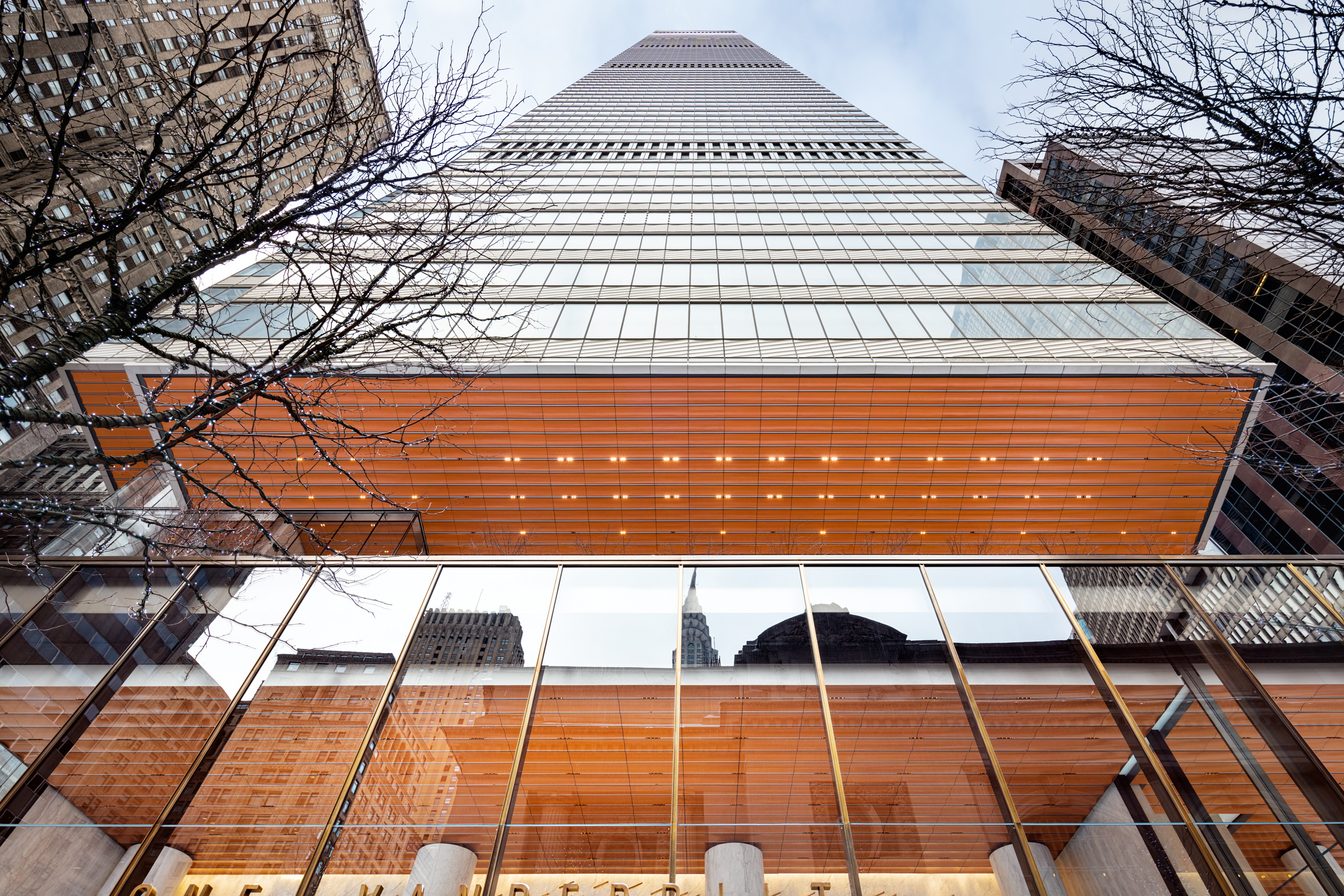
One Vanderbilt. Photo by Raimund Koch
The degree of interest in ACAW—as evidenced by the participation of leading architecture firms, fabricators, and installers, as well as academic institutions—suggests a very active interest in architectural terra-cotta as a material of the future.
Other firms participating in the workshop in 2021, working on other projects, include Studio Gang, COOKFOX Architects, Architecture Research Office, Goody Clancy, Walter P. Moore and Associates, Inc., Buro Happold, and more.
Krouse says he’s also keeping tabs on research at Harvard University that’s looking at how ATC can be used as part of an evaporative cooling system. Additionally, he follows research on the creation of thermal energy with the material, which would channel heat generated in facade materials through conduit pipe into buildings.
What is old is new again. This baked earth material might well hold solutions for a worrisomely warming world.

